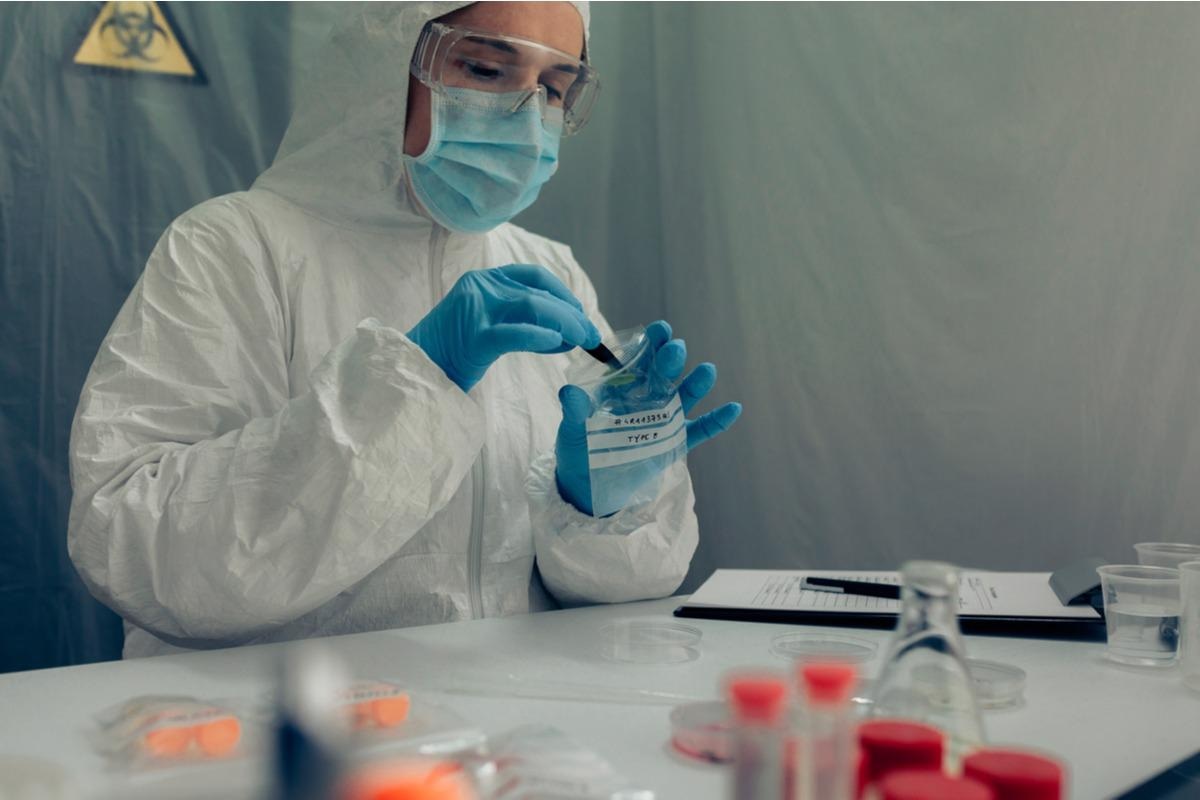propecia feedback
In a recent study posted to the medRxiv* preprint server, researchers evaluated the potential risk of severe acute respiratory syndrome coronavirus 2 (SARS-CoV-2) transmission through fomites contaminated by hospitalized coronavirus disease 2019 (COVID-19) patients during coughing or intense moistening with saliva.

Background
The increased COVID-19 incidence and severity have heightened public awareness of preventive measures and hygiene. Although the risk of fomites-based viral transmission has been reported previously, it has not yet been addressed systematically. Moreover, most studies assessing SARS-CoV-2 transmission by fomites were based on laboratorical viral ribonucleic acid (RNA) detection instead of directly detecting viral particles and/or viral-inoculated cell cultures.
About the study
In the present observational study, researchers evaluated fomite-based SARS-CoV-2 transmission by hospitalized COVID-19 patient-contaminated stainless-steel containers on intensive moistening with saliva or coughing. This evaluation was based upon the direct detection of viral loads and virus identification in cell culture.
Between November 2020 and April 2021, upper artane cottages 15 hospitalized and unvaccinated SARS-CoV-2-positive adults with high viral loads shortly post-admissions were recruited for the analysis. Data were obtained on their medical history, present medication use, laboratory reports, blood gas evaluation, and radiographic reports.
Patients were excluded from the analysis if they required ventilation support and intensive care unit (ICU) admissions or had a history of acute myocardial infarction, drug or alcohol or drug abuse, and psychiatric or clinical disorders that might worsen their condition during the sampling procedures.
The participants were asked to forcefully cough twice on a pre-defined surface area of nine standardized 1 cm-diameter steel containers, using a specially designed tripod from a pre-defined 15 cm distance. Additionally, they were asked to moisten nine steel containers with saliva for 10 seconds by keeping them in their mouth. Subsequently, the containers were analyzed at several time points, viz. minutes 1, 5, 15, 30, 45, 90, 120, and 240 at ambient temperature.
Nasopharyngeal and oropharyngeal swabs were obtained from all patients. Vero E6 cells were cultured for SARS-CoV-2 expression indicated by the viral cytopathic effects (CPE). Post-viral-inoculation, these cells and their supernatant (SN) were subjected to quantitative reverse transcription-polymerase chain reaction (RT-qPCR) analysis to determine the viral load and viral titers, respectively. The viral load was expressed as a 50% tissue culture infective dose (TCID50/mL). The viral titers were denoted as CT values calculated for the viral envelope (E), spike (S), RNA-dependent RNA polymerase (RdRP), and nucleocapsid (N) genes.
Subsequently, the RNA was reverse transcribed to generate complementary deoxyribonucleic acid (cDNA) copies. These cDNA copies were used for viral sequencing using the pangolin tool to confirm lineage assignment for full-length sequences. Additionally, variant patterns were assessed by investigating the S domains.
Results
About 33% of the patients were females, and the mean age of the patients was 71 years. On the day of the study, although most patients had mild COVID-19 (60%), follow-up data revealed clinical deterioration and death in 10 and three patients, respectively. Additionally, high levels of lactate dehydrogenase, leucocytes, and C-reactive protein on admission significantly correlated with COVID-19 severity. However, there were no significant correlations between COVID-19 severity and age, alanine aminotransferase, aspartate aminotransferase, procalcitonin, or D-dimer values.
In the RT-qPCR analyses, mean CT-values were 15, 18, 17, and 19 for the E, S, RdRP, and N genes, respectively. The viral variants observed were the wildtype (67%), Alpha (26%), and Beta (7%) variants. Viral sequencing confirmed lineage assignment for 93% of samples for almost entire-length genomic sequences. Post viral inoculation, viral loads in the cells and the SN ranged from 2.2×101 to 2×109 RNA copies/50 ng and from undetectable to 6.6×107 RNA copies/mL, respectively.
All samples were positive for viral ribonucleic acid (RNA) on the study day. However, SARS-CoV-2 could be isolated from only six patients (46%). Although there was no viral recovery after coughing, the virus was successfully recovered from five patients’ steel containers (38.5%) that were intensively moistened with saliva with viral loads ranging from 5.6×101 to 8.7×105 TCID50/mL.
Two patient samples were excluded from the analysis due to bacterial/fungal contamination in the cell cultures. Of note, in a few patients, the virus could be recovered from the steel containers for even four hours post-incubation at ambient temperature. This indicates that SARS-CoV-2 is environmentally stable.
Conclusion
In conclusion, based on the study findings, SARS-CoV-2 transmission via fomites was possible upon extensive moistening with saliva but unlikely to occur in real-life scenarios and from droplet-contaminated fomites.
*Important notice
medRxiv publishes preliminary scientific reports that are not peer-reviewed and, therefore, should not be regarded as conclusive, guide clinical practice/health-related behavior, or treated as established information.
- Meister, T. et al. (2022) "Risk of SARS-CoV-2 transmission by fomites: a clinical observational study in highly infectious COVID-19 patients". medRxiv. doi: 10.1101/2022.03.22.22272773. https://www.medrxiv.org/content/10.1101/2022.03.22.22272773v1
Posted in: Medical Science News | Medical Research News | Disease/Infection News
Tags: Alanine, Alcohol, Blood, Blood Gas, Cell, Cell Culture, Contamination, Coronavirus, Coronavirus Disease COVID-19, Cough, Coughing, covid-19, C-Reactive Protein, CT, D-dimer, Drug Abuse, Genes, Genomic, Hygiene, Intensive Care, Laboratory, Myocardial Infarction, Nasopharyngeal, Polymerase, Polymerase Chain Reaction, Procalcitonin, Protein, Respiratory, Ribonucleic Acid, RNA, SARS, SARS-CoV-2, Severe Acute Respiratory, Severe Acute Respiratory Syndrome, Syndrome, Tissue Culture, Transcription, Virus

Written by
Pooja Toshniwal Paharia
Dr. based clinical-radiological diagnosis and management of oral lesions and conditions and associated maxillofacial disorders.
Source: Read Full Article
